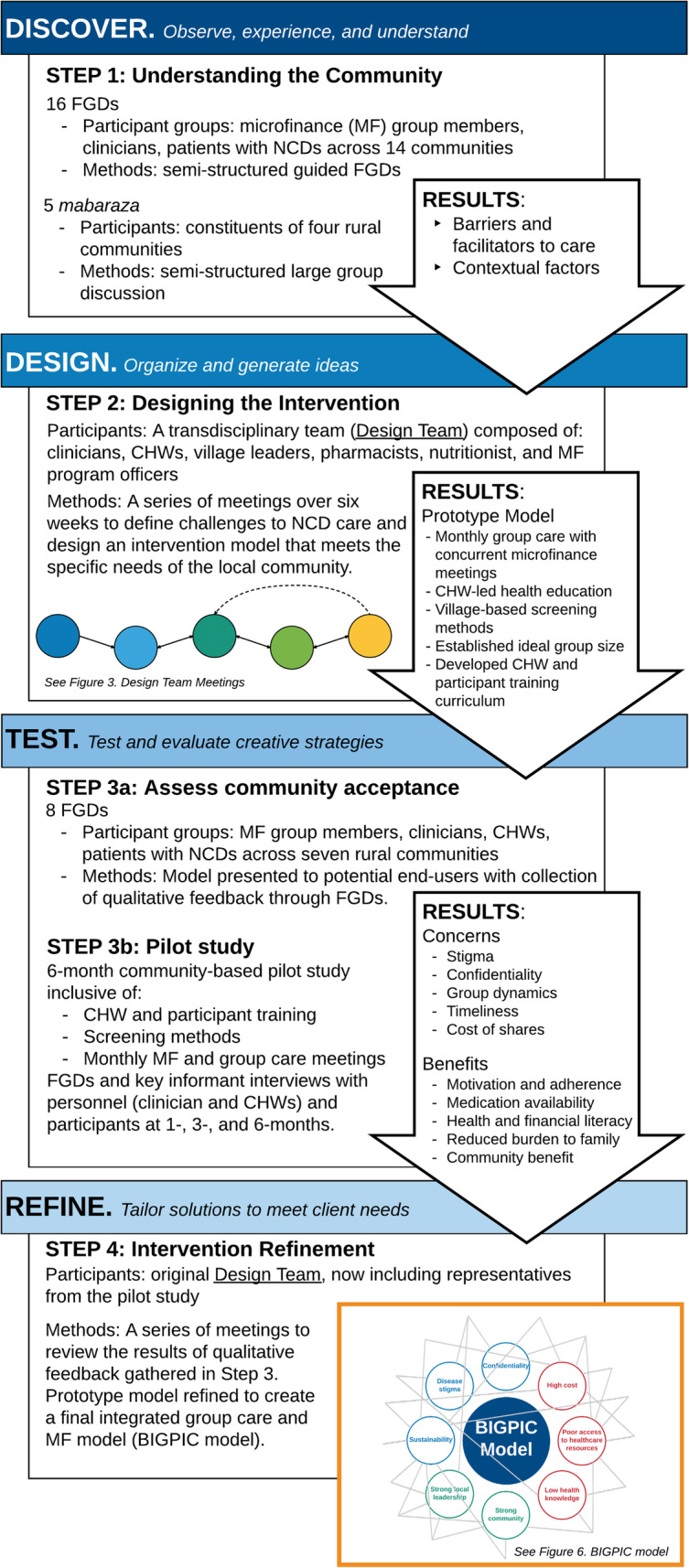Correction to: BMC Health Serv Res (2020) 20:415
https://doi.org/10.1186/s12913-020-05199-1
Following the publication of the original article [1], it was noted that due to a typesetting error the Figs. 1, 4, 5 and 6 are not correct.
Fig. 1.

Human-centered design stages and activities in the BIGPIC design process. Steps 1–4 describe each stage of our project in the context of the HCD steps (Discover, Design, Test, and Refine). As HCD is an iterative process, the arrows describe how the results of each step impact the next
Fig. 4.

Key themes were organized together to stimulate idea generation
Fig. 5.

Benefits and Concerns related to the BIGPIC model
Fig. 6.
The BIGPIC model. The final BIGPIC intervention consists of an integrated group care and microfinance model. In this figure, the surrounding circles represent the unique milieu that has informed BIGPIC’s development. These include community strengths (green text), barriers to care (red text), and concerns regarding the BIGPIC model (blue text) elicited from community and pilot participant feedback, as described in Fig. 1 (Steps 1, 3, and 4). The surrounding descriptors in black text are key features and implementation strategies of the BIGPIC model. Each can be mapped to a community-driven strength, barrier, or concern. The text highlighted in yellow represents changes that were made during the Design Team Re-evaluation (Fig. 1, Step 4) in response to participant feedback
The correct figures have been included in this correction, and the original article has been corrected.
The author affiliations need to be revised as below and the original article has been corrected.
Claudia L. Leung1, Mackenzie Naert2, Benjamin Andama3, Rae Dong2, David Edelman1, Carol Horowitz2, Peninah Kiptoo3, Simon Manyara3, Winnie Matelong3, Esther Matini3, Violet Naanyu4, Sarah Nyariki3, Sonak Pastakia5, Thomas Valente6, Valentin Fuster2, Gerald S. Bloomfield1, Jemima Kamano4, and Rajesh Vedanthan7*
Reference
- 1.Leung CL, et al. Human-centered design as a guide to intervention planning for non-communicable diseases: the BIGPIC study from Western Kenya. BMC Health Serv Res. 2020;20:415. doi: 10.1186/s12913-020-05199-1. [DOI] [PMC free article] [PubMed] [Google Scholar]



